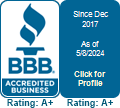
Contents
If your garage door isn’t opening properly, start by checking the remote control. Make sure the batteries are working and synced with the opener. Next, confirm the power source is connected and functioning. Examine the tracks to make certain they are clear and aligned. Test the safety sensors for any obstructions or misalignments. Regularly lubricate moving parts to prevent wear and tear. If issues persist, consider seeking professional help for a thorough evaluation. Discover the common reasons behind malfunctioning garage doors and find the best solutions.
Key Takeaways
- Check remote control batteries and signal interference.
- Ensure the power source is connected and functional.
- Inspect tracks, rollers, and lubricate moving parts.
- Test and align safety sensors for accurate detection.
- Seek professional help for persistent or complex issues.
Inspect the Remote Control
To troubleshoot potential garage door issues, begin by inspecting your remote control. If your garage door isn’t responding to the remote, it could be due to remote signal interference. Check for any possible sources of interference such as other electronic devices or objects blocking the signal path. Ensuring a clear signal between your remote and the garage door opener is crucial for smooth operation.
Next, consider replacing the battery in your remote control. A weak or dead battery can cause the signal to be too weak for the opener to receive. By replacing the battery with a fresh one, you can rule out this common issue and potentially resolve the problem quickly. Remember to use the correct type of battery as recommended by the manufacturer to guarantee excellent performance.
Regularly maintaining your remote control by keeping it clean, avoiding water exposure, and storing it in a safe place can also prevent malfunctions. Additionally, syncing your remote with the garage door opener according to the manufacturer’s instructions can help maintain a strong and consistent signal.
Check the Power Source
Make sure the garage door opener is securely plugged into a functioning power outlet. Sometimes, the simplest explanation is the solution. If the opener is not receiving power, it won’t function correctly. Check the power outlet by plugging in another electronic device to see if it works. If the outlet is not working, you may need to reset the circuit breaker or call an electrician to fix the issue.
When troubleshooting your garage door opener, consider checking the batteries in the remote control. Weak or dead batteries can prevent the signal from reaching the opener, causing it to malfunction. Replace the batteries with new ones, ensuring they are properly inserted according to the polarity indicated in the battery compartment.
| Issue | Solution | Feeling |
|---|---|---|
| Opener not powering on | Check power outlet | Frustration |
| Remote control not working | Replace batteries | Confusion |
| Intermittent power supply | Inspect power cord | Annoyance |
Ensuring that your garage door opener is connected to a working power source and that the remote control has fresh batteries can often resolve common issues. By taking these simple steps, you can enjoy the convenience of a smoothly operating garage door once again.
Examine the Tracks
Check for any obstructions or misalignments in the tracks of your garage door to ensure smooth and proper functioning. Proper track alignment is essential for the door to open and close smoothly. Inspect the tracks to guarantee they’re free from debris or any objects that could be blocking the path of the rollers. Even small items like pebbles or dirt can cause the door to get stuck or operate unevenly.
In addition to track alignment, regular roller maintenance is vital for the optimal performance of your garage door. Check the rollers for any signs of wear and tear, and lubricate them periodically to prevent friction and ensure seamless movement along the tracks. If the rollers are damaged or worn out, they can cause the door to operate noisily or become jammed.
Test the Safety Sensors
To verify your garage door functions properly, start by checking the alignment of the safety sensors.
Next, make sure to clean the lenses of the sensors to ensure they can detect obstacles accurately.
Lastly, don’t forget to inspect the wiring of the sensors to assure there are no loose connections causing issues.
Sensor Alignment Check
Confirm that the safety sensors are accurately aligned for your garage door to operate properly. Sensor troubleshooting often reveals alignment issues as a common cause of garage door problems.
To check the alignment, start by visually inspecting the sensors on each side of the door. Make sure that both sensors are facing each other directly and aren’t obstructed by any objects. Use a level to verify they’re aligned horizontally and vertically.
If the sensors are misaligned, adjust them carefully until they face each other perfectly. Remember, proper alignment is essential for the sensors to communicate effectively and guarantee the safe operation of your garage door.
Clean Sensor Lenses
Examining and cleaning the sensor lenses can help ensure the proper functioning of your garage door safety sensors. Regular sensor maintenance is essential to guarantee your garage door operates smoothly. Over time, dust, dirt, or spider webs can accumulate on the sensor lenses, disrupting their ability to communicate effectively.
To clean the lenses, use a soft cloth and a gentle cleaner to wipe away any debris. Be cautious not to scratch the lenses during this process. Additionally, check for any misalignments or obstructions that may be impacting the sensors’ performance.
Check Sensor Wiring
Examine the sensor wiring to ensure proper connectivity and functionality of your garage door safety sensors. Wiring issues can often be the culprit behind your garage door not opening smoothly.
Here are some sensor troubleshooting steps you can take:
- Check for Loose Connections: Make sure all wires are securely connected to the sensors and the garage door opener.
- Inspect for Damage: Look for any frayed or damaged wires that may be affecting the sensor’s performance.
- Clean the Connections: Dust and debris can interfere with the sensors’ ability to communicate effectively, so verify the connections are clean and free of any obstructions.
Lubricate Moving Parts
To keep your garage door operating smoothly, you need to regularly lubricate its moving parts. This simple maintenance task is important for preventing wear and tear on components like hinges, rollers, and springs.
Knowing the correct lubrication techniques can help extend the lifespan of your garage door system.
Parts Needing Lubrication
To ensure smooth operation and longevity of your garage door, regularly lubricate the moving parts to prevent unnecessary wear and friction. Here are some tips to keep your garage door running smoothly:
Lubrication Frequency: Make it a habit to lubricate the moving parts every 6 months to maintain optimal performance.
Types of Lubricants: Choose a silicone-based or lithium-based lubricant specifically designed for garage doors to guarantee proper lubrication without attracting dust.
Key Areas to Lubricate: Focus on lubricating hinges, rollers, tracks, and springs to reduce friction and noise, enhancing the overall functionality of your garage door.
Importance of Lubrication
Regular lubrication of the moving parts in your garage door is crucial for top performance and longevity. Proper lubrication provides various benefits such as minimizing friction, preventing wear and tear, and guaranteeing smooth operation. By consistently lubricating hinges, rollers, tracks, and springs, you can keep your garage door functioning effectively. However, there are common lubrication mistakes to avoid, such as using the wrong type of lubricant or over-lubricating, which can attract dirt and debris, causing more harm than good. By understanding the importance of lubrication and avoiding these mistakes, you can maintain your garage door in prime condition, ensuring it opens and closes smoothly whenever you need it to.
| Lubrication Benefits | Common Lubrication Mistakes | Best Practices |
|---|---|---|
| Minimizes friction | Using the wrong lubricant | Use a silicone-based lubricant |
| Prevents wear and tear | Over-lubricating | Apply lubricant sparingly |
| Ensures smooth operation | Attracting dirt and debris | Wipe off excess lubricant |
How to Lubricate Effectively
Properly lubricating the moving parts of your garage door is crucial for maintaining its peak performance and longevity. To guarantee you lubricate effectively, consider the following tips:
- Lubrication Techniques:
- Use a silicone-based lubricant to prevent attracting dust and dirt.
- Apply the lubricant sparingly but regularly to avoid buildup.
- Focus on the rollers, hinges, springs, and tracks for smooth operation.
Avoid these common lubrication mistakes:
- Common Lubrication Mistakes:
- Using WD-40 or grease, which can attract debris and cause clogs.
- Over-lubricating, leading to messy drips and accumulation.
- Neglecting certain parts like the tracks, leading to uneven movement and potential damage.
Call Professional Help if Needed
If troubleshooting your garage door issues on your own proves unsuccessful, consider bringing in professional help. Sometimes, garage door problems can be vital and require a professional evaluation to diagnose and fix the issue effectively. While remote troubleshooting can resolve many common garage door problems, there are instances where the expertise of a professional is necessary to guarantee the safety and functionality of your garage door.
Professional evaluation is essential when you encounter persistent issues such as strange noises, erratic movements, or complete failure to open or close. These signs may indicate underlying problems that need expert attention. A professional garage door technician has the knowledge and tools to inspect your garage door thoroughly, identify the root cause of the problem, and recommend the best course of action to resolve it.
Attempting to fix complicated garage door issues without the necessary expertise can be risky and may result in further damage or safety hazards. Professional help ensures that your garage door is repaired correctly and that all safety features are working as they should. By entrusting your garage door problems to a qualified professional, you can have peace of mind knowing that your garage door will be operating smoothly and safely in no time.
Recap
So next time your garage door isn’t opening properly, don’t panic! Remember to check the remote control, power source, tracks, safety sensors, and moving parts.
According to a survey conducted by HomeAdvisor, 45% of garage door issues are related to faulty sensors or tracks. By following these simple steps and keeping up with maintenance, you can avoid costly repairs and keep your garage door functioning smoothly.
Recent Posts
Troubleshooting Garage Door Repair: A How-To Guide
You might not realize that regular garage door maintenance can prevent costly repairs down the
3 Tips for Troubleshooting Garage Door Repairs
When your garage door suddenly stops halfway down, it can be frustrating. Start by checking
Why Troubleshooting Garage Door Repairs Matters?
Imagine trying to leave for work, but your garage door won’t budge. This frustrating scenario

